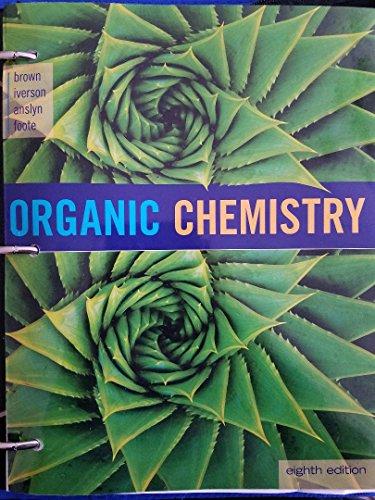
Concept explainers
(a)
Interpretation:
Synthesis of benzylamine from the given starting material has to be shown.
Concept Introduction:
Preparation of imine:
An imine is a compound having

Reduction: If electrons are gained to a species or hydrogen atoms are added to a species or oxygen atom gets removed from a species during a
(b)
Interpretation:
Synthesis of benzylamine from the given starting material has to be shown.
Concept Introduction:
Amide Hydrolysis: In presence of base, amide reacts with water to form the corresponding amine and
(c)
Interpretation:
Synthesis of benzylamine from the given starting material has to be shown.
Concept Introduction:
Preparation of amine: A primary amine is formed when an
Thionyl chloride:
(d)
Interpretation:
Synthesis of benzylamine from the given starting material has to be shown.
Concept Introduction:
Thionyl chloride:
(e)
Interpretation:
Synthesis of benzylamine from the given starting material has to be shown.
Concept Introduction:
Acid chlorides are most often prepared by treating a carboxylic acid with thionyl chloride.

Amide Formation: Amide is formed when an acid chloride reacts with an amine or ammonia.
Here, the chlorine atom that is attached to the carbonyl carbon atom of the acid chloride is being replaced by
Reduction: If electrons are gained to a species or hydrogen atoms are added to a species or oxygen atom gets removed from a species during a chemical reaction is known as reduction. In a reaction,
(f)
Interpretation:
Synthesis of benzylamine from the given starting material has to be shown.
Concept Introduction:
Preparation of amide: An amide is formed when an ester is reacted with ammonia.
Reduction: If electrons are gained to a species or hydrogen atoms are added to a species or oxygen atom gets removed from a species during a chemical reaction is known as reduction. In a reaction,
Trending nowThis is a popular solution!

Chapter 23 Solutions
Organic Chemistry, Loose-leaf Version
- Show how to convert the given starting material into the desired product. Note that some syntheses require only one step, whereas others require two or more.arrow_forwardHow does propane synthesized from propanone? Show its mechanism.arrow_forwardb) The Wolf-Kishner reduction is a reaction used in Organic Chemistry to convert carbonyl functionalities into methylene group. The reaction was used to convert an aldehyde or ketone to an alkane using hydrazine, base and thermal conditions. The mechanism begins with the attack of hydrazine of the aldehyde or ketone. Stage 1: The reaction of aldehyde/ketone with hydrazine to produce hydrazine Stage 2: Reaction with the base and heat to convert hydrozone to alkane Write the mechanism of the reaction.arrow_forward
- Show how to synthesize 3-nitro-4-propoxybenzoic acid from phenol, C6H5OH and any reagents that you need.arrow_forwardA synthetic organic molecule, G, which contains both aldehyde and ether functional groups, is subjected to a series of reactions in a multi-step synthesis pathway. In the first step, G undergoes a Wittig reaction, leading to the formation of an alkene, H. Subsequently, H is treated with an ozone (O3) reagent followed by a reducing agent in an ozonolysis reaction, resulting in the formation of two different products, I and J. Considering the functional groups present in G and the nature of the reactions involved, what are the most probable structures or functional groups present in products I and J? A. I contains a carboxylic acid group, and J contains an aldehyde group. B. I contains a ketone group, and J contains an alcohol group. C. I and J both contain aldehyde groups. D. I contains an ester group, and J contains a ketone group. Don't use chat gpt.arrow_forwardStarting with cyclohexanone and ethanol as the only organic reagents, use any inorganic reagents to propose a synthesis for the target molecule.arrow_forward
- Describe how 3-methyl-1-phenyl-3-pentanol can be prepared from benzene. You can use any inorganic reagents and solvents, and any organic reagents provided they contain no more than two carbons.arrow_forwardShow how to convert ethylene to 1,2-Ethanediol compound.arrow_forwardyou are performing an acyl nucleophilic substitution reaction using sodium acetate, acetic anhydride, salicyclic acid, and pyridine. show a mechanism for the reaction, and label the nucleophile, acyl compound, and the catalyst.arrow_forward
 Organic ChemistryChemistryISBN:9781305580350Author:William H. Brown, Brent L. Iverson, Eric Anslyn, Christopher S. FootePublisher:Cengage Learning
Organic ChemistryChemistryISBN:9781305580350Author:William H. Brown, Brent L. Iverson, Eric Anslyn, Christopher S. FootePublisher:Cengage Learning Organic Chemistry: A Guided InquiryChemistryISBN:9780618974122Author:Andrei StraumanisPublisher:Cengage Learning
Organic Chemistry: A Guided InquiryChemistryISBN:9780618974122Author:Andrei StraumanisPublisher:Cengage Learning


